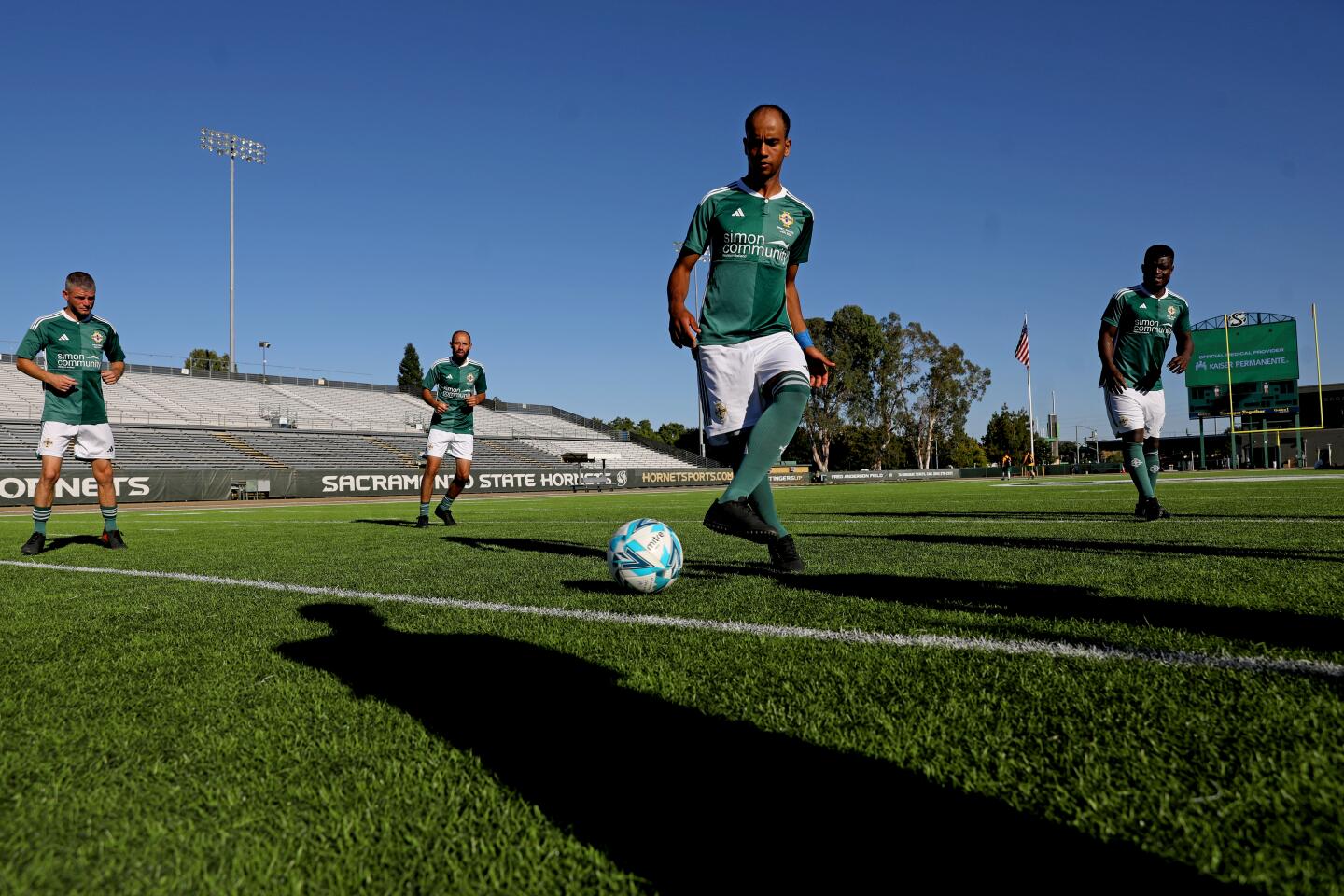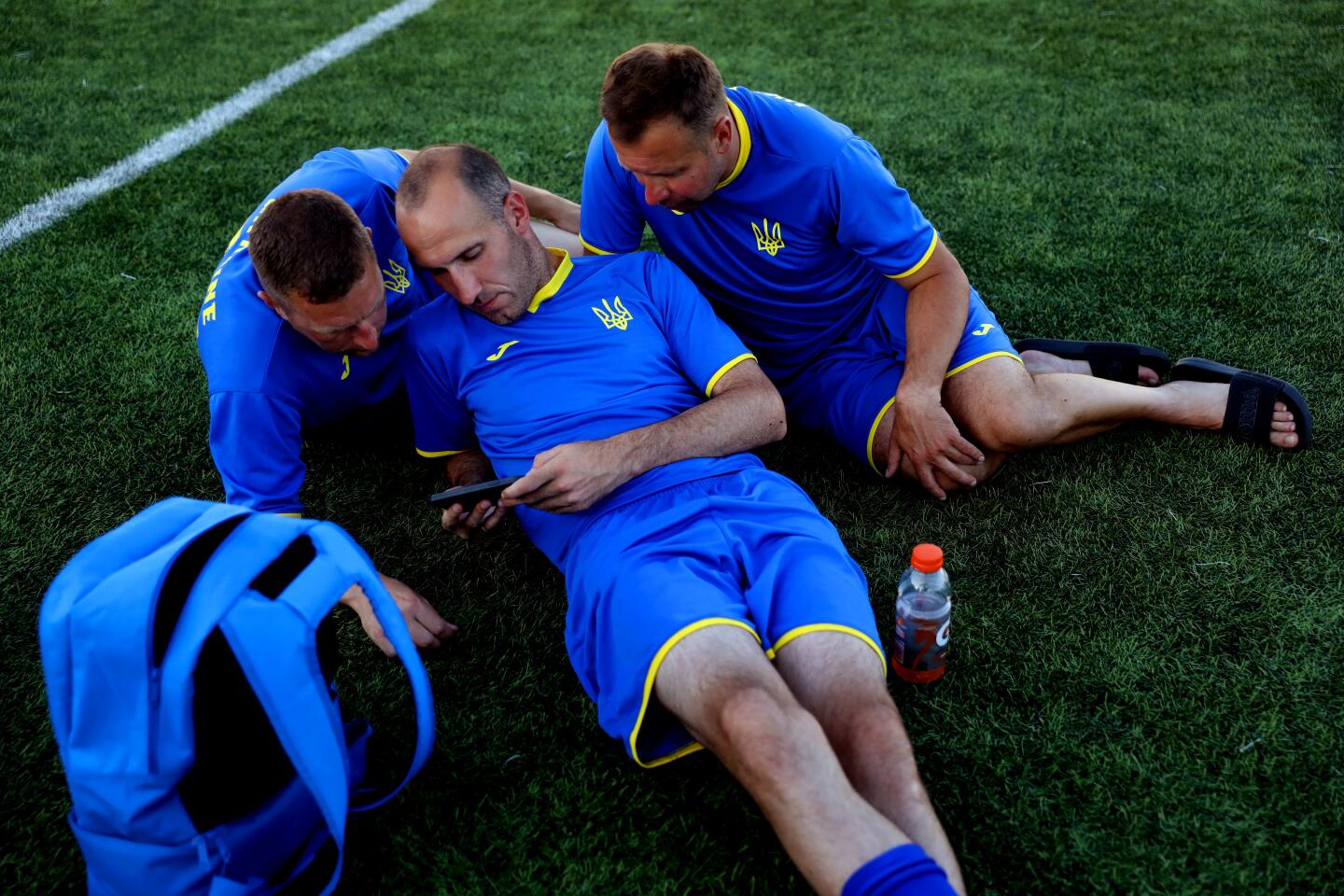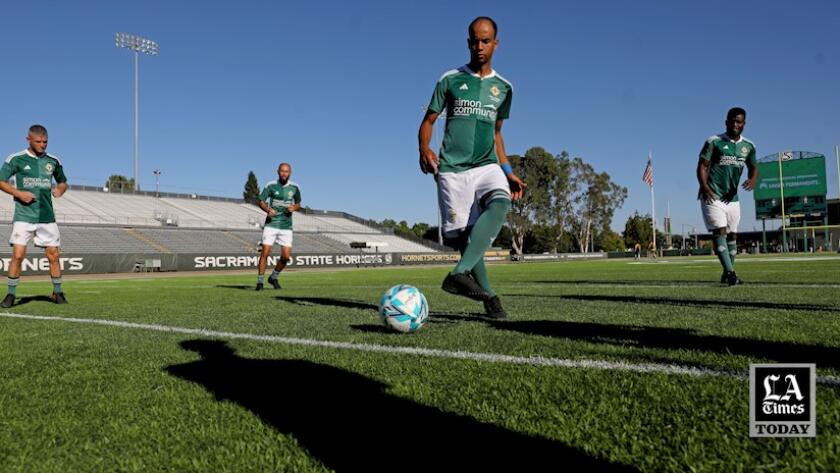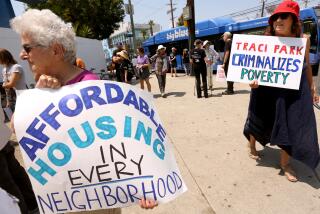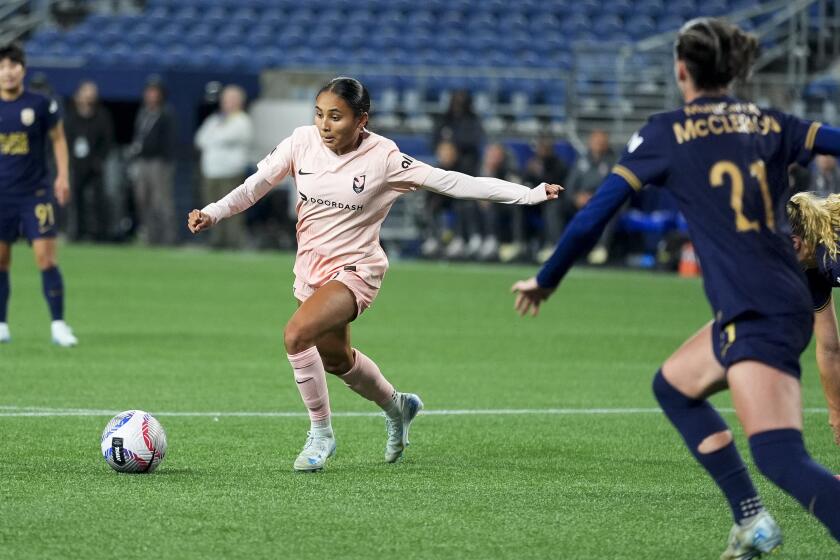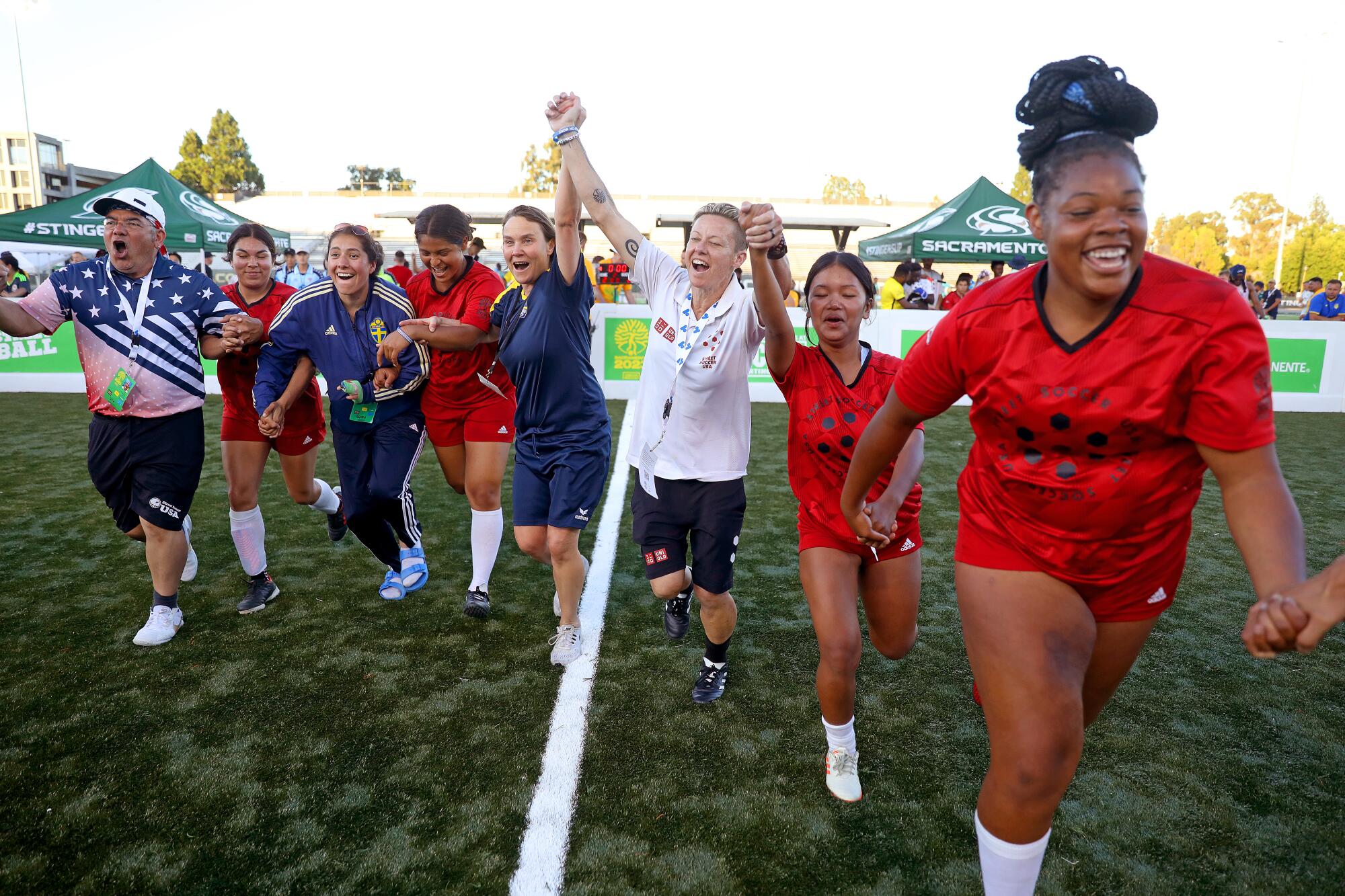
- Share via
SACRAMENTO — Sienna Jackson doesn’t know where she’d be if she hadn’t found Street Soccer USA. But she knows where she wouldn’t be: in a home, in dental school or starring for the U.S. in the Homeless World Cup.
“My mental state would have went to trash,” said Jackson, 25, who had less than $3 in her pocket when her mother kicked her out of her home just after her 20th birthday. “I think I probably would have turned to drugs and alcohol. I honestly think I would have given up on myself.”
Donnie Nicholson knows exactly where he’d be if he hadn’t been introduced to soccer more than a dozen years ago.
“I’d be dead,” said the 47-year-old, who spent a decade on the streets after leaving the Navy.
Instead, both found purpose, camaraderie and hope in the simplest of games. And during the past week, they’ve been sharing that with 420 athletes and coaches on 42 men’s and women’s teams from 29 countries at the Homeless World Cup in Sacramento, a competition where you are a winner just for showing up.
The idea for the tournament came in the late 1990s, and like so many good ideas, it was borne over a pint of beer.
Mel Young and Harald Schmied, who co-founded the event, were deep in a conversation about homelessness. At the time, the men operated publications known as street papers, newspapers or magazines homeless people are paid to sell on the street. The men knew having a job and earning an income had an impact on homeless people, often rebuilding their self-esteem and motivating them to change their lives.
After hours of discussion, Young and Schmied concluded that soccer could have a similar impact on homeless people on a global scale.
“It’s a simple game, anyone can play it, it’s inexpensive, you can be rubbish at it, or you can be good at it,” Young said. “We’ve seen with children the power soccer has had in terms of getting kids active and involved.”
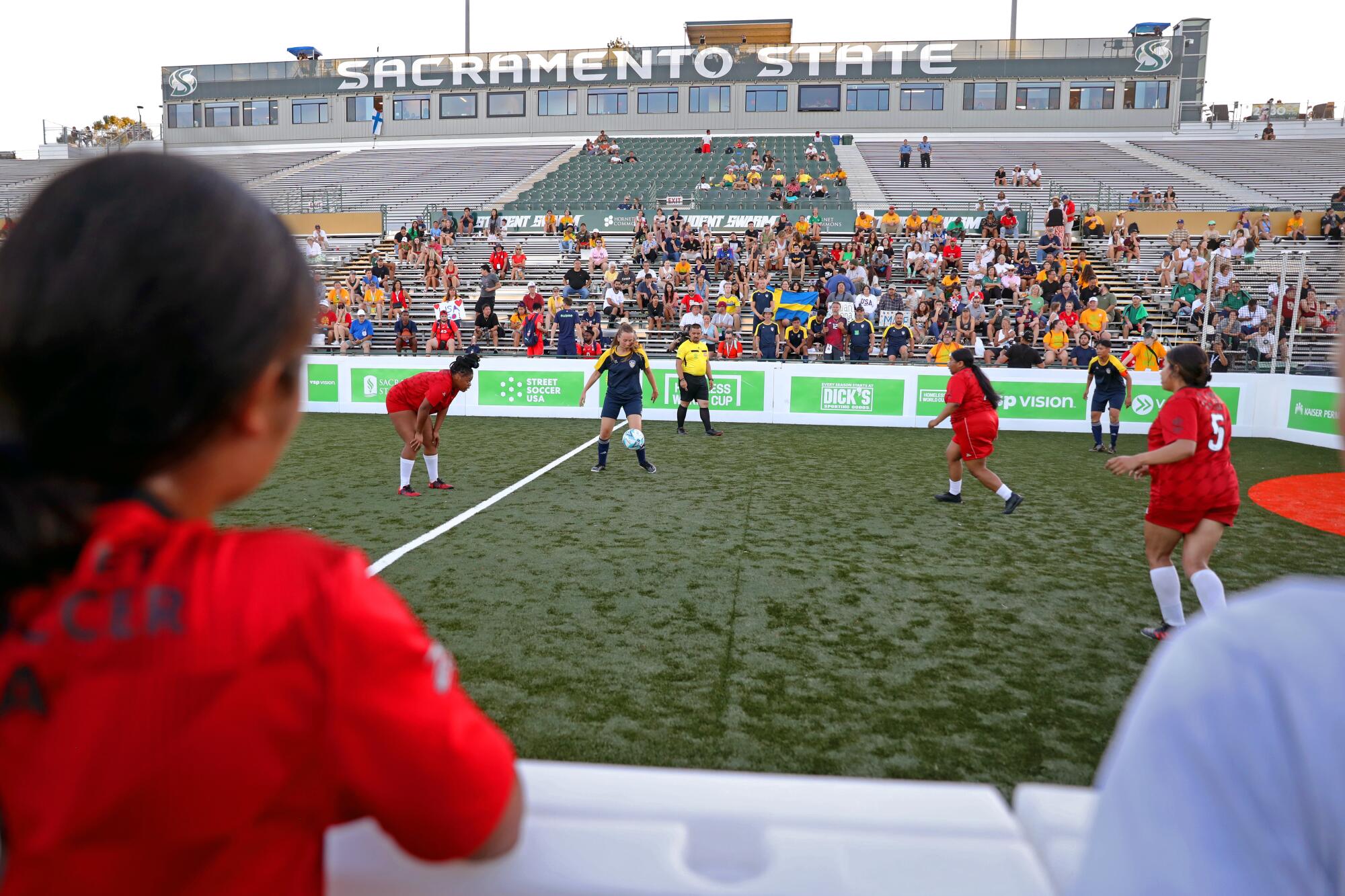
“If we can create solutions and create this compassion, then maybe issues can be addressed in good faith rather than people bickering over small things and the optics of things.”
— Reed Fox, Homeless World Cup U.S. men’s team coach
So the two men began networking with homeless providers that supported similar programs across the world. In the U.S. that was Street Soccer USA, a national nonprofit founded by brothers Lawrence and Rob Cann, two former Division I soccer players.
Those groups were charged with selecting the teams and providing transportation and other support for the players and coaches to participate in the Homeless World Cup. And though the specific guidelines can vary from country to country, to be eligible for consideration, players must be at least 16 years old, either currently be homeless or, like Jackson, have been homelessness or in a rehabilitation center at some point in the past two years. As a result, players reflect a range of situations from refugees and asylum seekers to people forced into shelters or on to the street because of a lack of affordable housing.
The first Homeless World Cup was held in July 2003 in Austria with 18 countries participating. That event’s success resulted in annual tournaments that have included a network of more than 70 countries and impacted more than 1.2 million people. The competition has also garnered media attention, inspiring documentaries and soon, a Netflix film. All the matches have been streamed on YouTube; Saturday’s men’s and women’s finals will also be streamed live via TUDN.
“This is beyond anything we dreamed up,” Young said. “I have to pinch myself sometimes.”
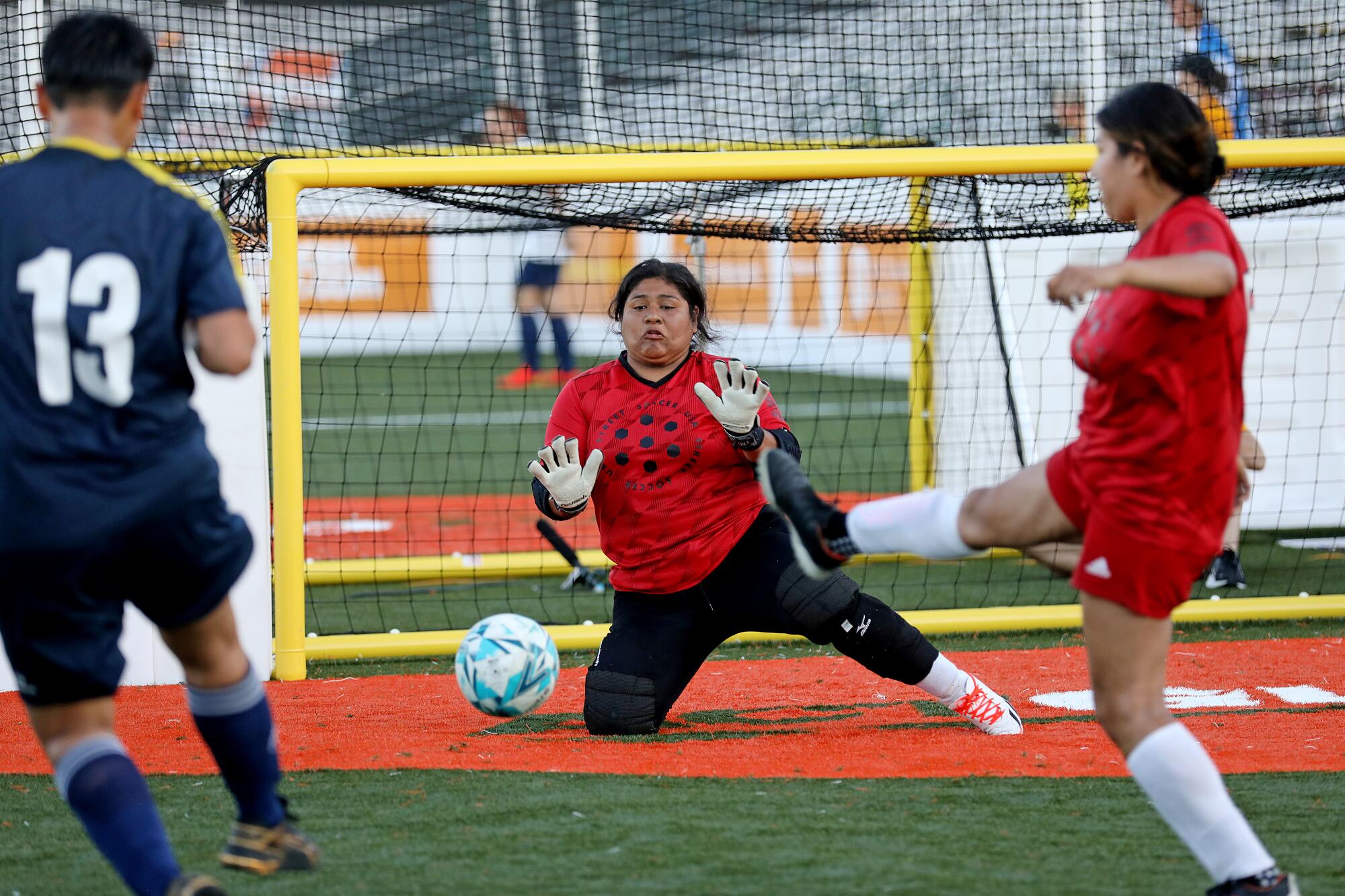
This year’s tournament was the first held in the U.S., was hosted by Sacramento State University — whose retiring president, Robert Nelsen, is such a fervent supporter he delayed his departure until the end of the tournament — and Street Soccer USA. It marked the tournament’s return from a three-year hiatus caused by the coronavirus pandemic.
The games, played in temperatures approaching 100 degrees on three fields lined up along the western sideline of the football field at Sacramento State, resemble futsal — or indoor soccer — more than the outdoor game. The matches are divided into two seven-minute halves with a one-minute intermission and are played on walled-in synthetic-turf fields about the size of a basketball court. Teams consist of eight players, only four of whom can be on the field at a time, and given the small surface and the unlimited substitutions that are made on the fly, games are frequently played at a breakneck pace.
The event had the feel of a major international competition, with teams raising flags behind their bench and wearing their nation’s colors on their chest. The Australians carried an inflatable kangaroo wherever they went and the Ukrainians, who took the field to warm applause, draped their country’s blue and yellow banner over their shoulders.
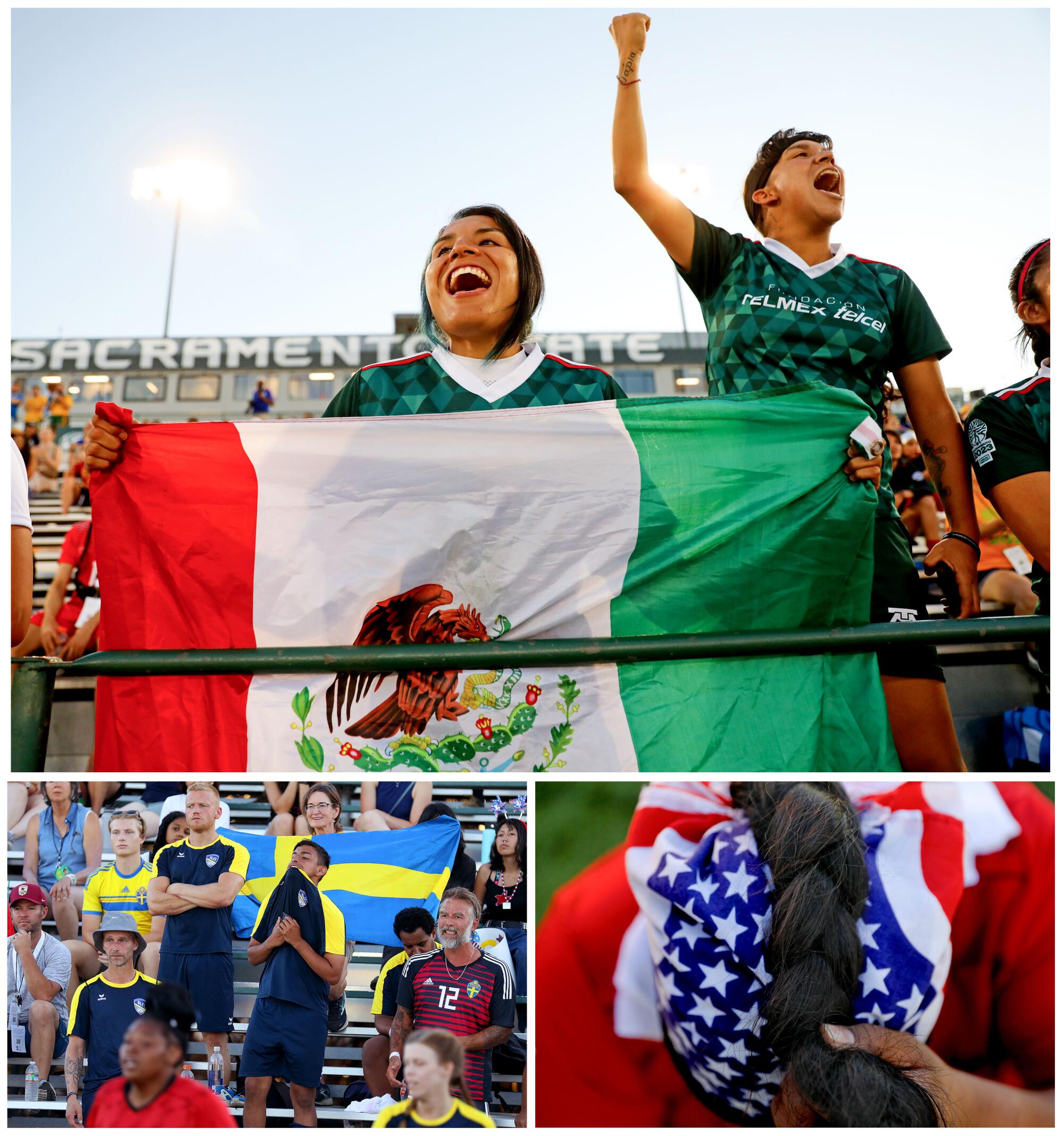
But don’t confuse the patriotism with nationalism. Everybody here came from the same background, endured similar challenges and were housed in adjoining dorms at Sacramento State. So when they met over meals at the school cafeteria, they shared tables and found a way to communicate despite the fact they were speaking more than two dozen languages.
With a few exceptions, such as the bitterly fought U.S.-Mexico game and a chippy Poland-Denmark match in the group stage, the matches were friendly affairs in which sportsmanship was more important than gamesmanship. After an Indonesian player crashed through the boards and off the pitch during his team’s game with Pakistan, for example, two Pakistani players, rather than exploiting the advantage, chased after him and helped him back on the field. When the U.S. women beat Sweden in a tie-breaking shootout, the Swedish player who missed her penalty kick hugged Jackson, who made hers to decide the match.
Following each game, players and coaches from both sides meet in the center of field, clasped hands, then raise their arms toward the crowd in a gesture of appreciation and celebration.
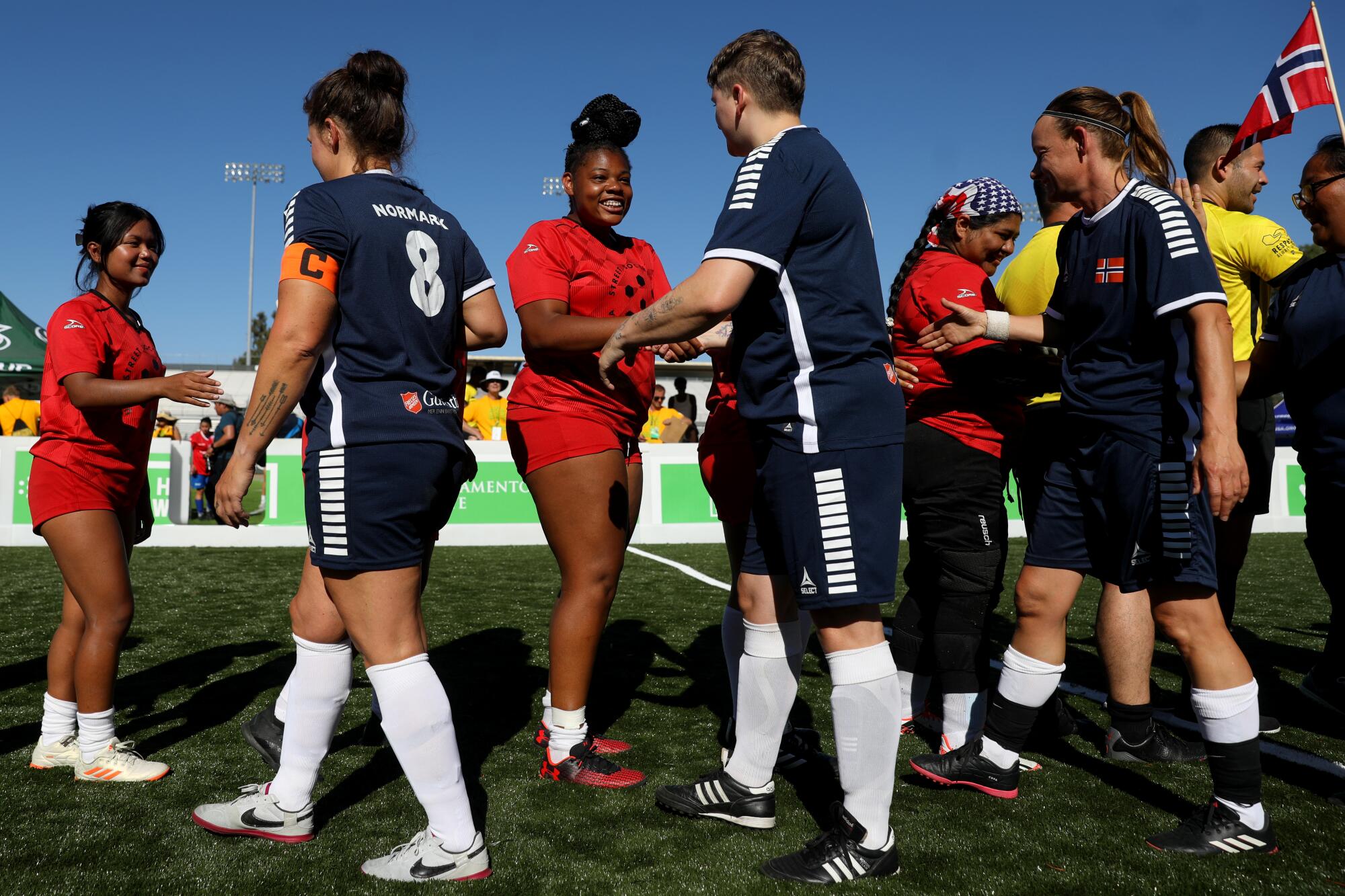
Homelessness affects about 150 million people worldwide, but the problem has special resonance in California, a state that accounts for 12% of the U.S. population but 28% of the homeless population and 51% of the unsheltered homeless. Earlier this year, researchers with the Public Policy of California, a nonpartisan think tank, found that California’s homeless population had increased by 6.2%, from 161,548 to 171,521, since 2020.
Experts say housing affordability, stagnant wages and rising prices due to inflation have pushed people into or to the verge of homelessness. And now with the end of pandemic-era protections, experts and government officials fear the crisis will only worsen.
“Most people are one paycheck away from being homeless,” said Reed Fox, a former high school player who is coach of the U.S. men’s team. “Obviously this event is not going to solve homelessness. But if we can create solutions and create this compassion, then maybe issues can be addressed in good faith rather than people bickering over small things and the optics of things.”
That’s the theory on which the Homeless World Cup and Street Soccer USA were established. Rather than focusing on traditional approaches to the crisis, which have not worked, both organizations try to solve the problem one person at a time by teaching teamwork and responsibility and providing a support network. So while critics say the $2 million budget to stage the weeklong tournament would have been better spent on housing and other services for the homeless, World Cup advocates push back, saying that’s only a temporary solution. Truly solving the homeless crisis requires thinking outside the box and addressing the individual.
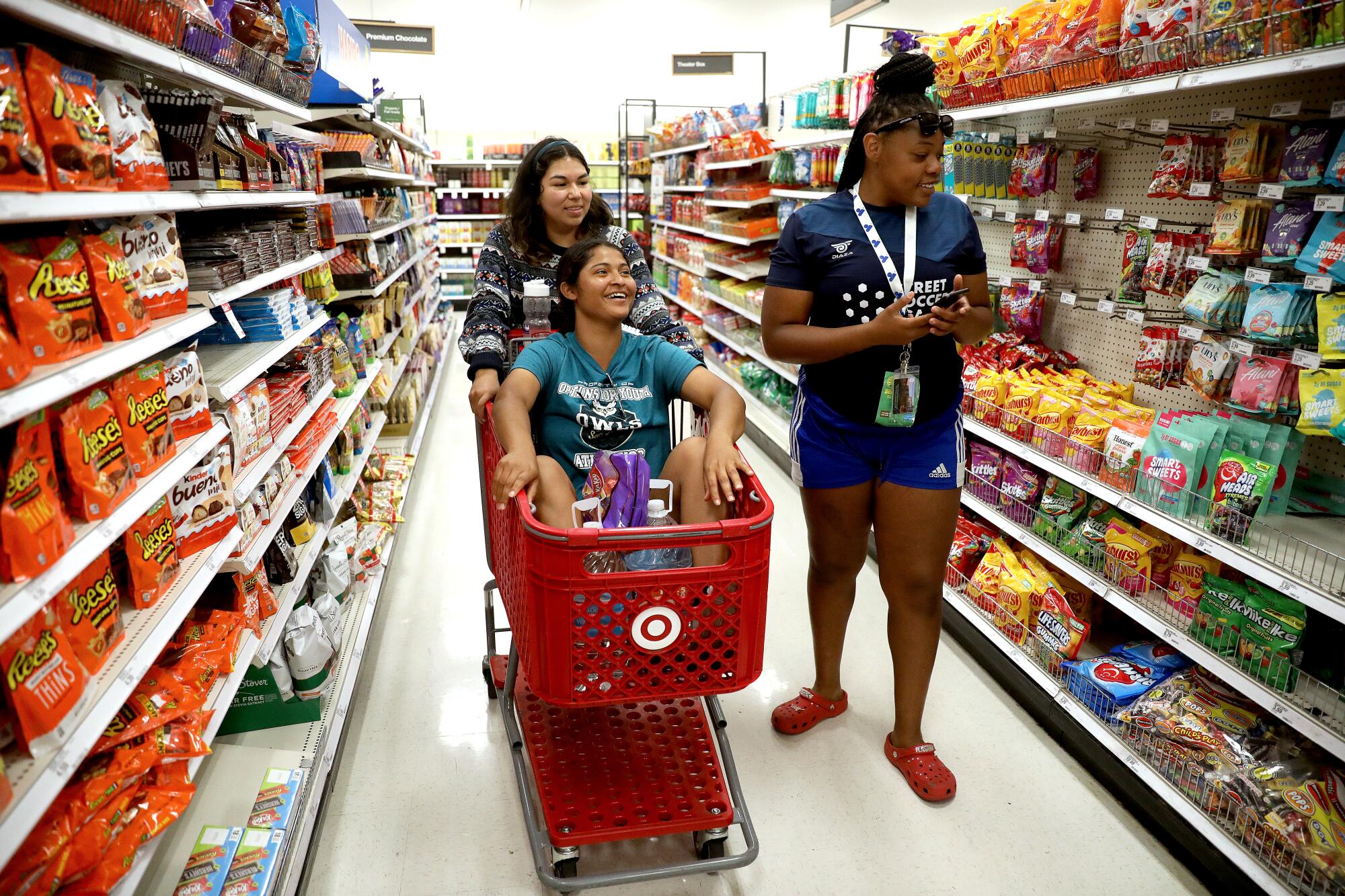
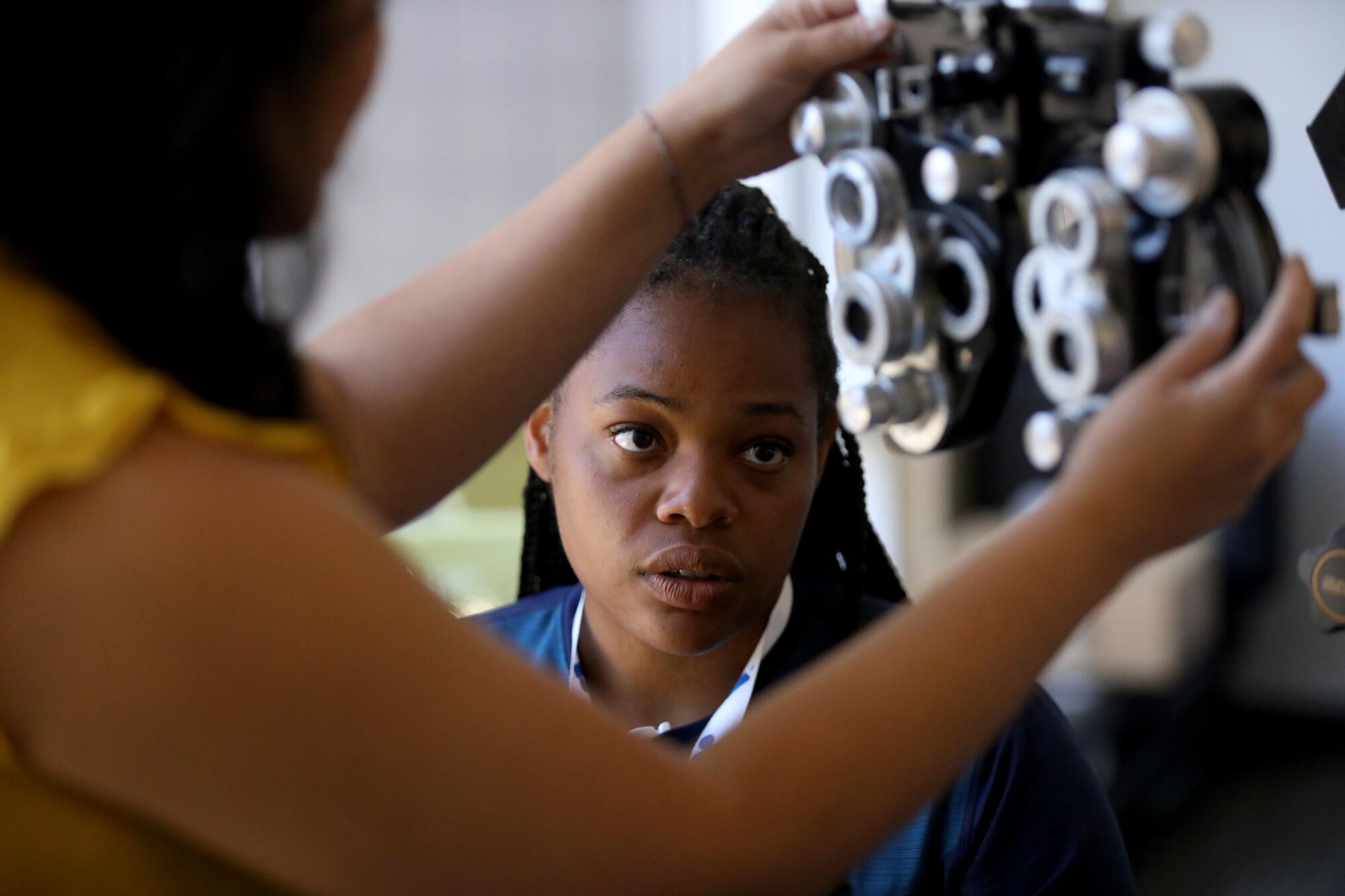
“It takes a lot of resources and a lot of time to build housing. $2 million is not going to go very far,” Lawrence Cann said. “What we found is when you communicate physically, when you work with people — it could be a building project or it could be kicking a soccer ball around — but when you build relationships of trust, all of a sudden, the services flow a lot more effectively, because people feel valued and they feel supported.”
To prove his point Cann need look no further than Lisa Wrightsman, a former Sacramento University State soccer player who not only participated in the 2010 Homeless World Cup in Brazil, but coached the U.S. team this year.
Wrightsman began playing soccer at the age of 4, but stopped when she was 12 years old after she was diagnosed with cancer. After six months of chemotherapy, soccer helped her reconnect socially and helped renew a passion for the game.
“The women were so fulfilled by wearing a jersey with a number on it that said something positive like the USA and not a hospital gown.”
— Lisa Wrightsman, on how playing in the Homeless World Cup changed her and her teammates
She was so good she earned a scholarship.
“I was doing so well at Sacramento State that my coaches were trying to groom me to play in the new women’s professional league that started in 2000,” she said. “Then the women’s league folded and that gutted me and I wasn’t really ill prepared to not have that daily practice, the team structure and all the things that playing everyday was doing for me.”
Wrightsman’s life eventually descended into chaos. She began partying more and soon she found herself battling alcohol and drug addiction until she hit rock bottom in 2009. She enrolled in a 90-day residential sobriety program followed by a two-year sober living program with Volunteers of America. It was there that she was introduced to Street Soccer USA, which ultimately led to her playing in the 2010 Homeless World Cup in Brazil.
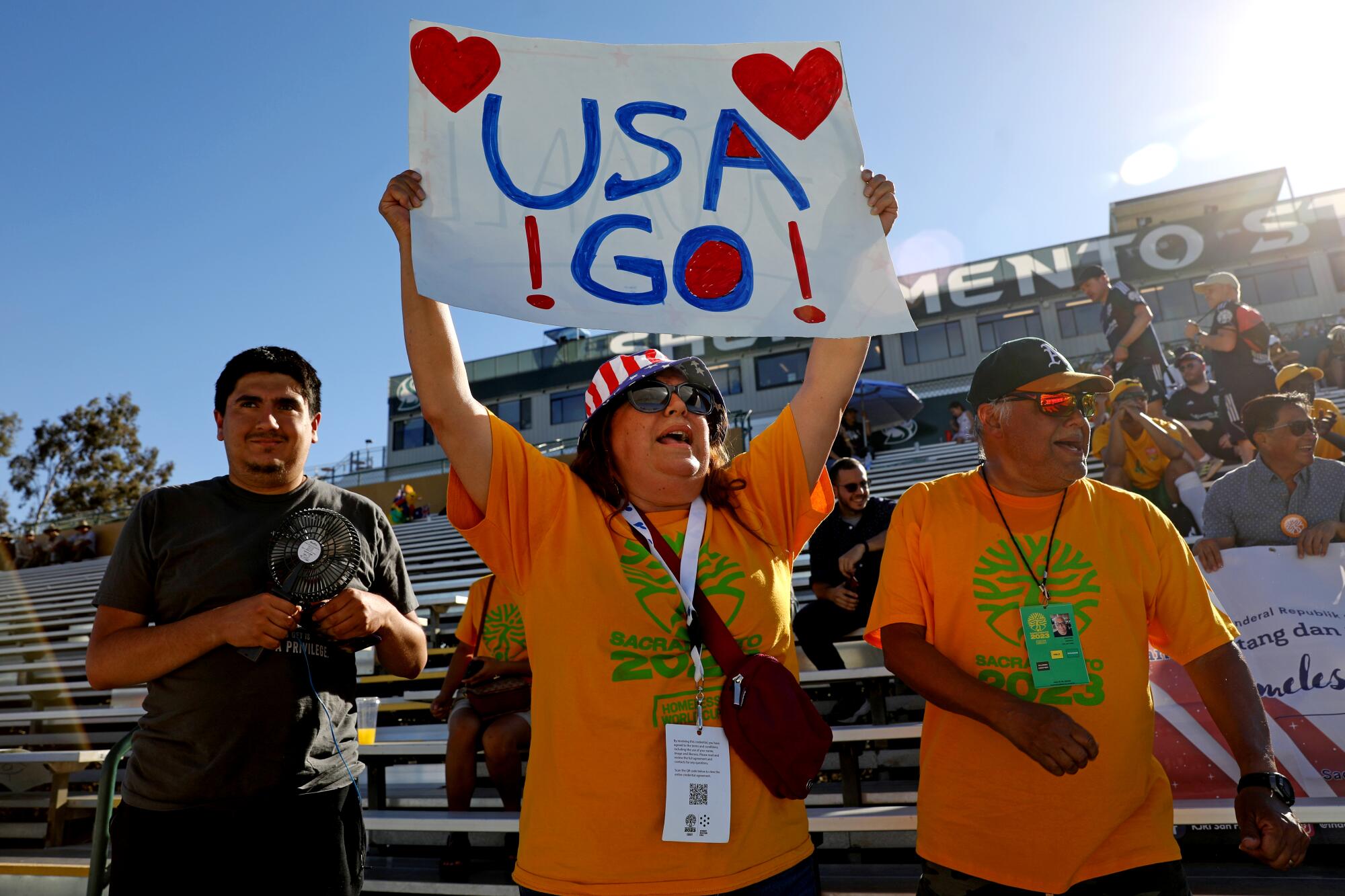
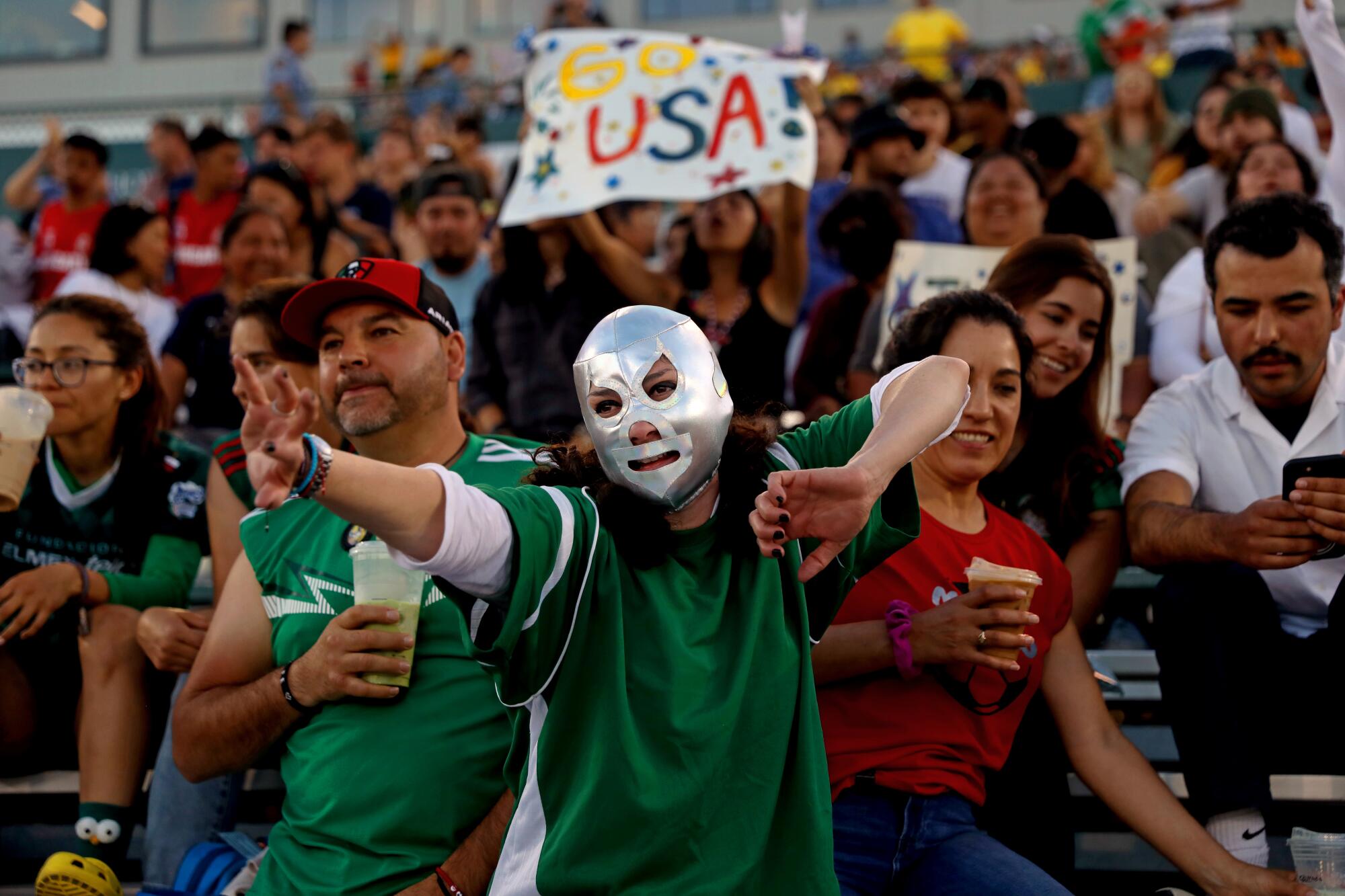
She said most of her teammates didn’t know how to play soccer, so she had to teach them how to dribble and pass. They didn’t win many games but learning to play the game and wearing a uniform had such an impact that it made Wrightsman see the game differently.
“We all knew that you were at the Homeless World Cup because you had survived some hardship,” she said. “The women were so fulfilled by wearing a jersey with a number on it that said something positive like the USA and not a hospital gown,” she said. “The uniform was clean and bright and they felt good.”
Wrightsman, 42, said she wasn’t the same person after the tournament.
Cann has seen similar transformations, especially among players who leave the tournament with medals. For years they’ve existed on the margins of society, scorned when they are considered at all. But at the Homeless World Cup, where all the traditional impediments to success are stripped away, they’re allowed to succeed. The effect is life-changing.
“This absolutely works,” Cann said. “These adults, 40 years old, wear their medals for a week after the tournament. I was like, ‘This is crazy.’ But no, it’s something fundamental.”
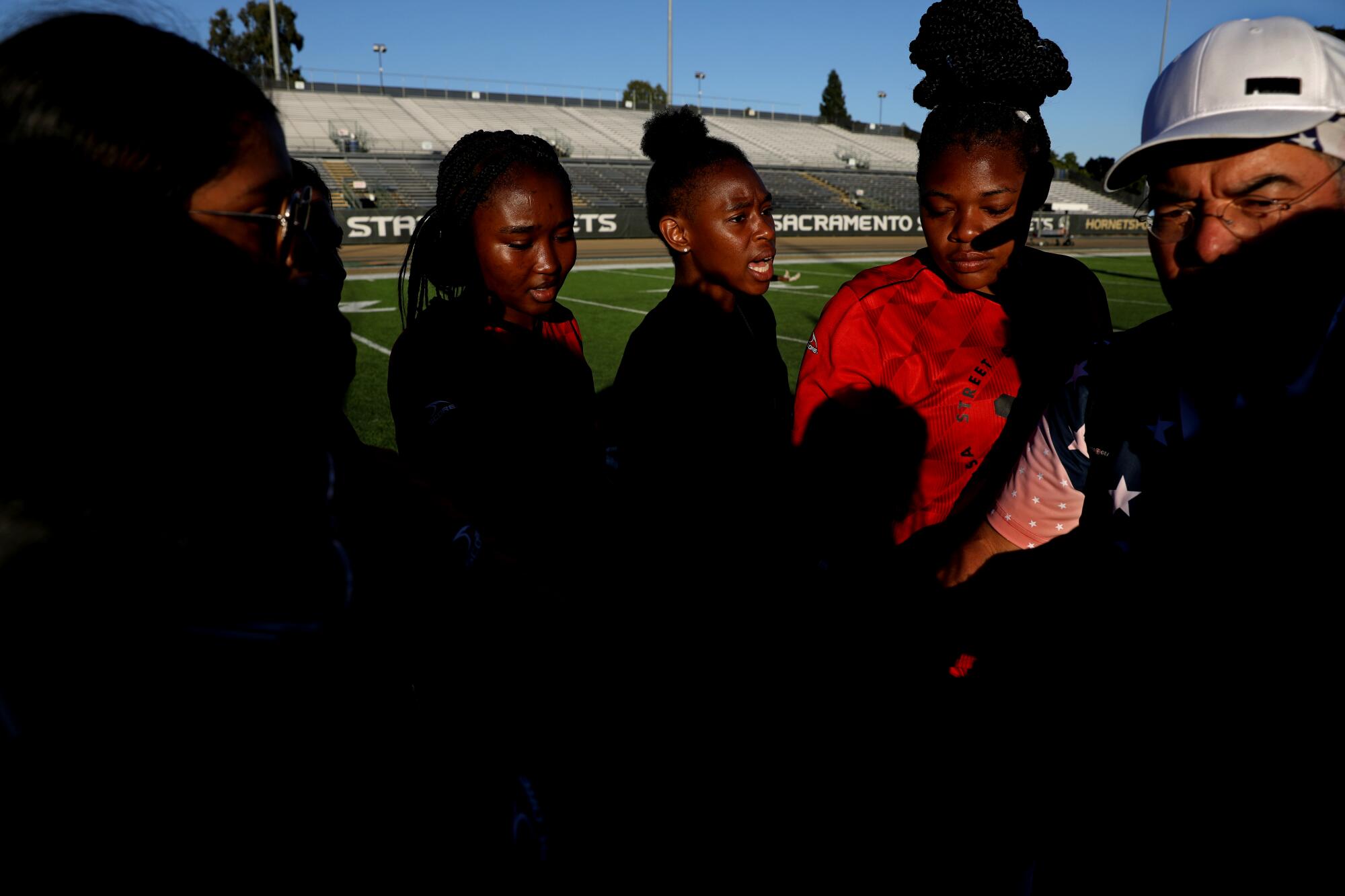
Yet though the Homeless World Cup is theoretically an athletic competition, few of its participants are competitive athletes. Most are middle-aged or older, many are several pounds above their ideal playing weight. Some lack the physical stamina to conquer a long flight of stairs much less a competitive soccer match.
This matters not at all because the tournament in Sacramento was a celebration, not a coronation. Here victory goes not to the winner, but to those with the courage to take part.
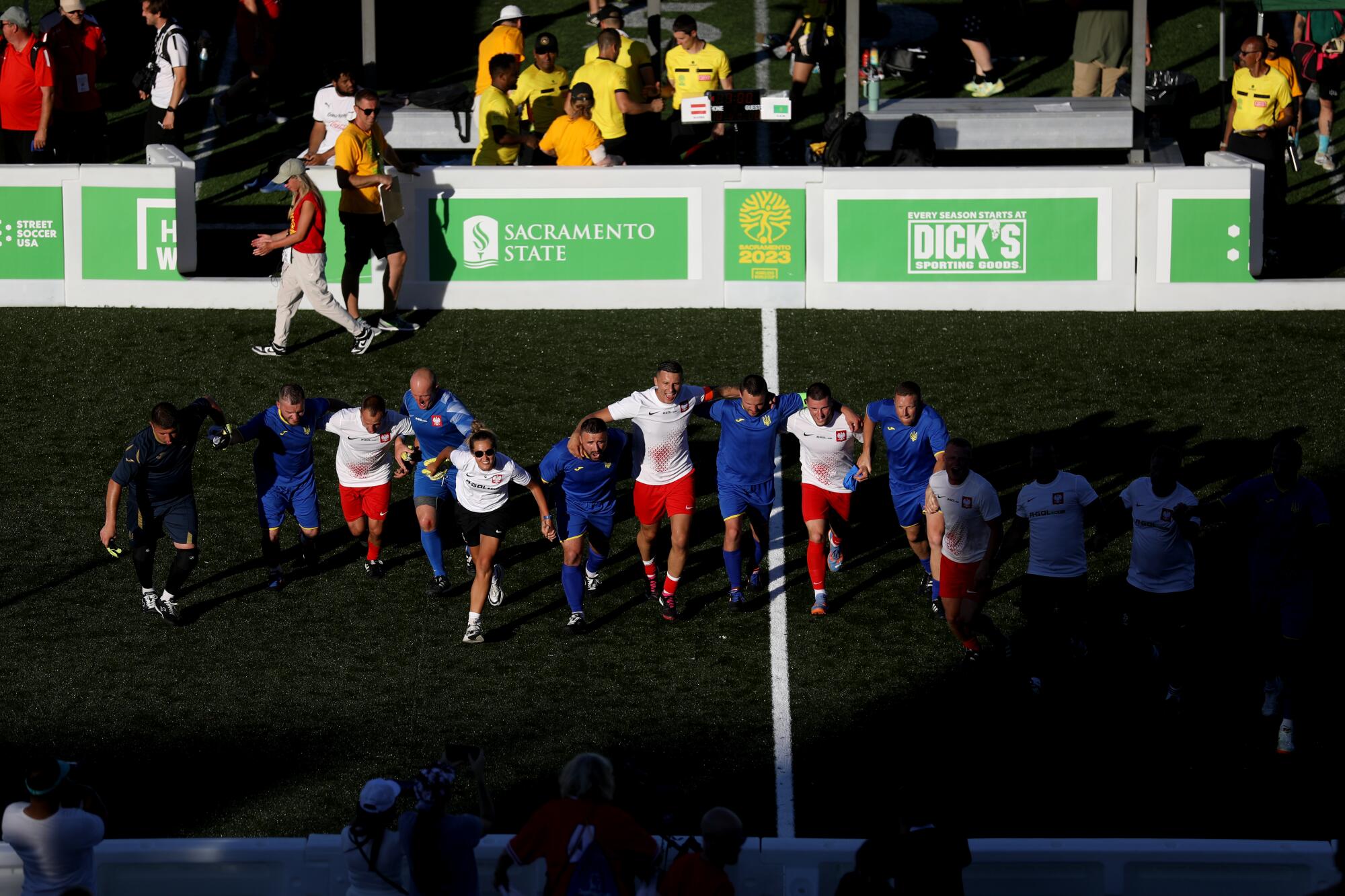
“The big goals of hosting the tournament is to get rid of the stigma of homelessness and to bring compassion to people here in the Sacramento area and across the United States,” said Fox, 30. “These are not drug addicts, criminals, thieves. They’re people like us, and they can play soccer like us. And so we should have some compassion for people that can be in that situation. These people are laughing, hugging, celebrating, having fun.”
“That is,” he added “the essence of what this tournament is about.”
- Share via
Watch L.A. Times Today at 7 p.m. on Spectrum News 1 on Channel 1 or live stream on the Spectrum News App. Palos Verdes Peninsula and Orange County viewers can watch on Cox Systems on channel 99.


